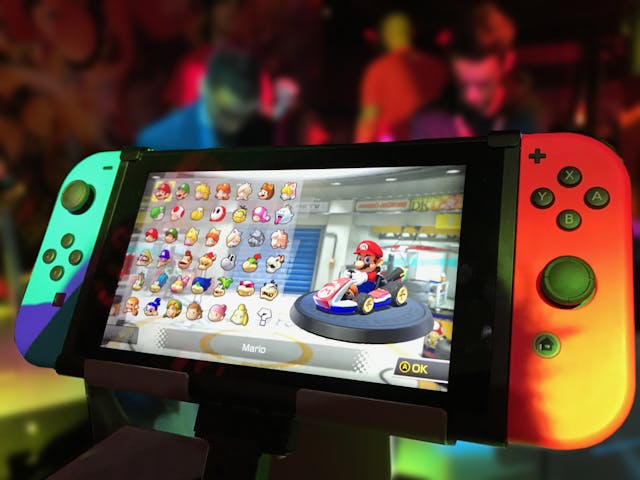For decades, the idea of readily accessible, interactive entertainment was a whisper on the fringes of technological possibility. We used to limit ourselves to evening broadcasts and scheduled releases. Now, it’s a torrent. The shift has been less a linear progression and more a complex, branching fractal, with new avenues of engagement constantly splitting off from established currents. As a journalist who’s been observing this landscape develop for over thirty years, I’ve witnessed a genuine paradigm shift, one that’s profoundly altered how we consume, create, and, frankly, *think* about leisure.
The Dawn of Personalized Consumption – Streaming’s Ascent
Before the late 2000s, watching a film or listening to music was often a communal experience – a trip to a cinema, a journey to a record store, or a careful selection from a satellite channel’s programming. The notion of a tailored experience, catering specifically to individual preferences, seemed almost utopian. Then came content delivery networks, initially focused on bandwidth-intensive media, and the seeds of what we now call streaming were sown. It began with relatively primitive services offering on-demand content, but the underlying technology was constantly refining. The crucial element, of course, wasn’t just *access* to content, but the ability to curate a personal viewing or listening playlist. This represents a fundamental change in the power dynamic – consumers moved from passive recipients to active selectors, shaping their own entertainment narratives.
The Rise of Algorithms and the Echo Chamber Effect
The early days of streaming were charmingly chaotic. Recommendations were, shall we say, enthusiastic – leaning heavily on popularity and ignoring all other variables. Now, algorithms hum beneath the surface, analyzing viewing history, purchase patterns, and even emotional responses (through metrics like blink rate and dwell time) to deliver an increasingly refined stream of content. This is undeniably efficient; it’s dramatically reduced the decision fatigue associated with choosing what to watch or listen to. However, it also has a darker side. The tailored experience can, ironically, lead to an echo chamber, reinforcing existing biases and limiting exposure to diverse perspectives and creators. There’s a significant body of research, comparable to the explorations done by institutions dedicated to understanding information flow, suggesting that this isolation can subtly skew perceptions.
Data as the New Currency
Let’s be frank: the entire streaming ecosystem is predicated on data. Every click, every pause, every rewind is meticulously recorded and fed back into the algorithmic engine. This data fuels not just recommendations, but also pricing strategies, content investment decisions, and even the scheduling of releases. The collection and analysis of this data generates a significant revenue stream, and the control of that stream – whether it’s from the platform itself or the content creators – is a powerful dynamic. It’s a complex negotiation, reminding us of the often-unseen trade-offs inherent in digital services.
The Interactive Revolution: Gaming’s Transformative Influence
While streaming captured the public imagination early on, it was gaming that truly demonstrated the power of interactive entertainment. Initially, online multiplayer was a niche pursuit, a gathering of dedicated enthusiasts connected by dial-up modems and a shared passion. But the advances in broadband technology, coupled with the emergence of sophisticated networking infrastructure, pushed gaming into the mainstream. The transition from single-player cartridges to sprawling, persistent online worlds was, and remains, a remarkable feat of engineering and design.
From Local LAN to Global Networks
Early online gaming was largely confined to local area networks – gamers huddled around their PCs in the same room, competing for dominance. Gradually, the technology evolved to support wider networks, allowing players from across the globe to connect and collaborate. This shift wasn’t just about technical superiority; it fundamentally altered the nature of competition and social interaction. Suddenly, skill and strategy were matched against a broader, more diverse pool of talent. The rise of esports – competitive gaming – provides a compelling illustration of this transformation; the industry has developed a complex ecosystem of leagues, sponsorships, and broadcasting, and has even garnered the attention of major sporting bodies – a reflection, perhaps, of its growing cultural significance.
The Metaverse and the Blurring of Boundaries
We’re now seeing a convergence of these trends – streaming and gaming – with the emergence of the “metaverse.” This concept, once relegated to the realm of science fiction, is rapidly gaining traction, fueled by advancements in virtual reality, augmented reality, and blockchain technology. The possibilities – immersive social experiences, digital ownership, and new forms of content creation – are genuinely exciting. However, as with all nascent technologies, there are significant concerns surrounding data privacy, accessibility, and the potential for further social fragmentation. It’s crucial to approach these developments with a careful, critical eye – a willingness to question not just *what’s possible,* but *what’s desirable*.
The Rise of User-Generated Content and Playful Creation
The shift isn’t just about consuming content; it’s about creating it. Platforms like Roblox, Minecraft, and countless others are empowering users to build their own worlds, design their own games, and share their creations with a global audience. This democratization of content creation is arguably the most significant change of all. It’s shifting the power away from traditional gatekeepers and into the hands of the users, fostering a vibrant ecosystem of experimentation and innovation. A recent study indicated that a significant portion of revenue generated within these platforms stems directly from user-created assets – a testament to the inherent value of this user-driven approach.
- Increased accessibility to creative tools.
- A shift in the definition of “professional” content creation.
- The emergence of entirely new artistic genres.
Looking Ahead: The Future of the Digital Agora
The evolution of online entertainment isn’t simply about faster connections or more sophisticated algorithms. It’s about a fundamental re-evaluation of how we spend our leisure time, how we connect with others, and how we express ourselves creatively. Going forward, expect to see even greater integration between these different forms of entertainment – immersive gaming experiences blended with live streaming, personalized virtual worlds offering a seamless flow between content consumption and creation, and a continued emphasis on social interaction. The lines between reality and simulation are already blurring, and this trend will only accelerate. As always, the ethical and societal implications of these developments deserve careful consideration. We need to ask ourselves – not just *can* we do this, but *should* we? What responsibilities do platform providers, content creators, and users have in shaping a future where digital entertainment enhances, rather than diminishes, our lives?
The Importance of Digital Literacy
Navigating this increasingly complex landscape requires a certain level of digital literacy – the ability to critically evaluate information, understand the underlying technologies, and recognize the potential biases embedded within algorithms. Promoting digital literacy education is essential, particularly for younger generations who are growing up immersed in this world. Furthermore, fostering a culture of informed skepticism is paramount. It’s no longer enough to simply accept what’s presented to us; we must actively question, investigate, and demand transparency.
The Persistence of Human Connection
Despite all the technological advancements, the underlying human need for connection remains constant. Online entertainment, at its best, can facilitate these connections – bringing people together from all corners of the globe, fostering communities around shared interests, and providing opportunities for collaborative creativity. However, it’s also crucial to remember that digital interaction is fundamentally different from face-to-face communication. Maintaining a healthy balance between online and offline engagement is more important than ever. Considering the long-term impact of screen time and the potential for social isolation is a vital, and often overlooked, aspect of this ongoing evolution.
A Table Summarizing Key Developments:
| Era | Dominant Form of Entertainment | Key Technologies | Characteristics |
|---|---|---|---|
| Early Digital (1990s-2000s) | Text-based and early graphical games, dial-up internet access | Modems, BBS systems, early web browsers | Limited bandwidth, static communities, primarily single-player experiences |
| Streaming Emergence (2006-2010s) | Video streaming (YouTube, early streaming services) | Broadband internet, streaming protocols (Flash, HLS) | On-demand content, personalized recommendations, beginning of data collection |
| Gaming Mainstream (2010s-Present) | Online Multiplayer Games | High-speed internet, cloud gaming, VR/AR | Social interaction, competitive landscapes, increasingly immersive experiences |
| The Hybrid Era (2020s-Present) | Streaming & Gaming Convergence | 5G, Blockchain, Advanced AI | Interactive storytelling, user-generated content, metaverse concepts |
Ultimately, the future of online entertainment will be shaped by the choices we make today. It’s a dynamic, ever-shifting terrain, and the journey—as is often the case—is just beginning.
Question & Answer
Q: Given the increasing reliance on algorithms, are we truly in control of what we consume, or are we subtly being guided?
A: That’s a profoundly insightful question. The short answer is, it’s a complicated combination. Algorithms certainly exert a powerful influence by prioritizing certain content and making it more visible. However, users still have the agency to actively seek out alternative viewpoints and bypass recommendations. The key lies in cultivating a critical awareness of the underlying biases within these systems and consciously diversifying our consumption habits. It’s less about ‘control’ and more about intentionality.

